Take a Trip to Machu Picchu
James Bustamante is Native to New York but born to Peruvian parents. He has been traveling throughout Latin America since early 2003 and finally made his home in Peru. James has made his way by eating and traveling through almost every country in Central and South America.
Last Updated on February 26, 2024 by James Bustamante
Taking a trip to Machu Picchu is probably going to be in a lot of people’s bucket list for the next few years.
That being said, we want to be proactive with our readers and suggest the most exciting route when taking a trip to Machu Picchu.
Where can you start the trip to Machu Picchu? What other sites should we see? How do I get around? What should I know before taking a trip to Machu Picchu?
Let’s take a look below at what the best route for a trip to the Inca citadel would be by first reaching the inca city of Cusco and then finally going on the hike to Machu Picchu.
Start The Machu Picchu Trip in Miraflores
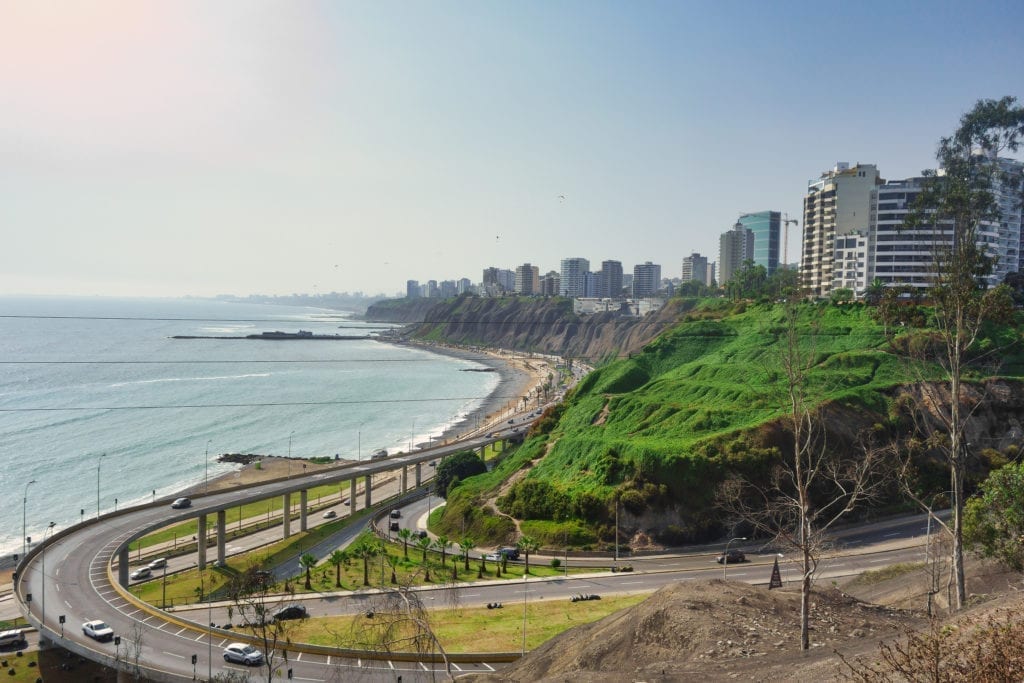
Embark on a captivating journey to Machu Picchu, commencing in Lima’s vibrant Miraflores district—a cornerstone for adventurers. Miraflores serves as the ideal gateway for our esteemed guests, chosen for its blend of safety, convenience, and cultural vibrancy.
Miraflores stands out as a beacon of safety in Lima, peppered with accommodations ranging from cozy hostels to luxurious hotels, ensuring a comfortable stay for every traveler. The district is a treasure trove of culinary delights, boutique shops, quaint coffee houses, and museums, offering a comprehensive experience right from the start.
Conveniently, our Lima base is nestled within Miraflores, ensuring seamless support and personalized service from our dedicated travel advisors, who are readily available to assist and ensure your journey begins without a hitch.
A visit to Miraflores wouldn’t be complete without exploring its iconic landmarks, such as the lively Kennedy Park, the cliffside Larcomar shopping center, and the serene Iglesia Parroquia La Virgen Milagrosa.
Consider delving into the heart of Lima through our meticulously curated city tour, a journey that unveils the multifaceted districts of Miraflores, the historic center of Lima, the affluent San Isidro, and the bohemian Barranco—all within a span of a few enriching hours. Commencing at 9:00 am, this exploration concludes by 2:00 pm, ensuring you return to your abode in time to relish a local lunch.
We recommend dedicating at least two days to immerse in Lima’s allure, setting a solid foundation for the majestic Machu Picchu adventure that lies ahead. It’s essential to note that the voyage to Machu Picchu requires a transition through Cusco, as direct routes from Lima are not available. This journey is not just a transition from city to citadel but a passage through the rich tapestry of Peruvian culture and history.
What Will You See In The Lima City Tour?
The Historic Center of Lima was Declared a UNESCO World Heritage Site; this area is home to colonial architecture, majestic churches, and important government buildings. Notable landmarks include the Plaza Mayor (Main Square), the Presidential Palace, the Cathedral of Lima, and the Archbishop’s Palace.
San Francisco Church and Convent: Famous for its Spanish Baroque architecture and Catacombs, the San Francisco Church is a must-visit for its religious art and underground tunnels filled with centuries-old bones.
Miraflores District: Known for its shopping areas, gardens, flower-filled parks, and beaches, Miraflores is a modern, upscale part of Lima. Key attractions include Larcomar, a shopping center overlooking the Pacific Ocean, and Parque Kennedy, the district’s central park.
Larcomar Shopping Center: Perched on a cliff offering panoramic views of the Pacific Ocean, Larcomar is not just a place to shop but also a prime spot for dining and entertainment in Miraflores.
Barranco District: Lima’s bohemian and cultural district is known for its vibrant street art, colonial-style houses, cozy cafes, and lively nightlife. Highlights include the Bridge of Sighs (Puente de los Suspiros) and the Barranco Main Square.
Huaca Pucllana: An ancient adobe and clay pyramid in the Miraflores district, The Huaca Pucllana was an important ceremonial and administrative Pyramidal center for the Lima Culture. This society developed in the Coastal area of Peru between 200 and 700 AD.
San Isidro District: This is one of Lima’s most affluent districts, featuring modern skyscrapers, lush gardens, and exclusive residential areas. It’s also home to the Huaca Huallamarca, a pre-Incan adobe pyramid.
Plaza San Martín: Part of the Historic Center, this plaza is surrounded by historic buildings and is named after José de San Martín, a key leader in South America’s struggle for independence from Spain.
Museo Larco (Larco Museum): Although only sometimes included in short city tours, this museum is a highlight for those interested in pre-Columbian art. It houses a vast pottery collection, gold and silver artifacts, and erotic art from ancient Peru.
These sites provide a comprehensive overview of Lima’s multifaceted identity, from its pre-Hispanic past to its colonial history and modern-day vibrancy.
The Andean City of Cusco
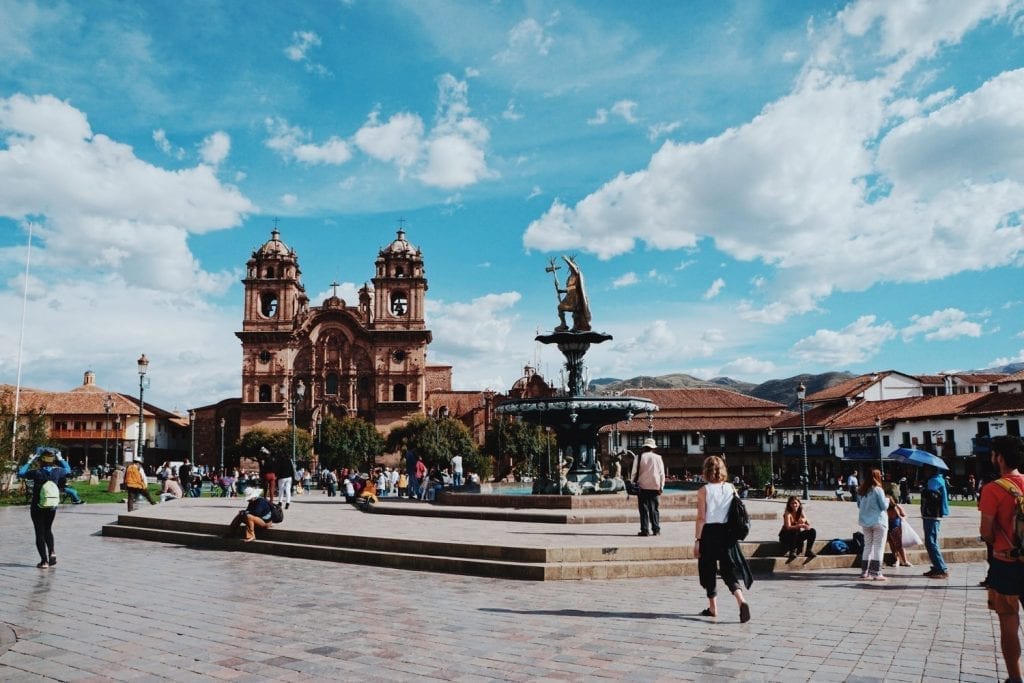
Our next destination on our trip to Machu Picchu is the historic city of Cusco. To reach the Andean city we’ll take a domestic flight that takes no more than an hour and a half to complete. This city is located high in the Andes mountains at around 11,000 feet above sea level (3,399 meters above sea level).
Upon arrival, you’ll see the vast difference between a cosmopolitan city like Lima and a highland city like Cusco. You will also feel quite differently, thanks to the sudden change in elevation. You might want to take the first day as an acclimatization day.
So just take it easy for the first 24 – 48 hours and eat light meals, have plenty of fluids and make sure you take short walks around your hotel.
As we continue to travel to Machu Picchu remember that it is imperative for you to feel well throughout the activities so make sure to go through the protocol for elevation sickness.
Some of the more notable locations to visit in the Cusco would be The Cusco main square, the San Blas artistic neighborhood, The Koricancha museum, Sacsayhuaman, The 12 angled stone, and several more.
You can actually visit all these great locations and many additional places in our Cusco city tour that starts at 8:30 am and ends back at your hotel by 6:00 pm.
The tour of Cusco includes all required permits and tickets, transportation, and a bilingual guide.
The Sacred Valley of the Inca
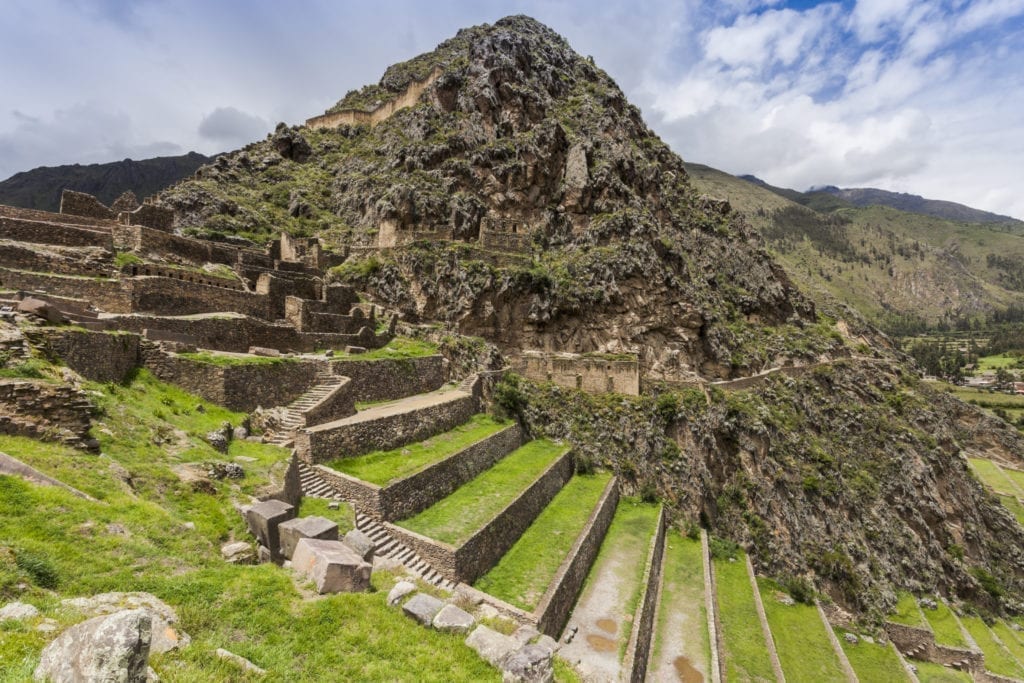
For those sensitive to the higher altitudes, we propose an enchanting alternative to begin your Peruvian adventure: immerse yourself in the tranquility of the Sacred Valley before venturing into Cusco. Nestled two hours away from the bustling city, this serene haven offers a gentle acclimatization thanks to its more forgiving elevation. Our dedicated drivers are at your service, ensuring a seamless journey to this peaceful retreat.
In our tailored Peru tour experiences, we prioritize your comfort and well-being by scheduling the Cusco exploration towards the latter part of your journey. This thoughtful arrangement allows you to enjoy the majestic Sacred Valley, situated at a comfortable 9,400 feet above sea level—a stark contrast to the dizzying heights of Cusco. While the elevation difference might appear minimal, it’s crucial to acknowledge the significant impact even slight variations can have on acclimatization.
The Sacred Valley isn’t just a sanctuary for easing altitude adjustment; it’s also a revered site for those seeking spiritual awakening through Ayahuasca ceremonies. With Urubamba serving as a gathering point, intimate and larger groups convene for transformative experiences led by seasoned shamans amidst the Valley’s profound connection to nature and ancient traditions.
Exploration in the Sacred Valley reveals treasures beyond the spiritual. Delight in the vibrant Pisac Andean Market, where the art of negotiation with local artisans allows you to acquire exquisite Alpaca garments, savor traditional Andean delicacies and discover unique silver crafts. The journey continues to Ollantaytambo, a historic town famed for its Inca ruins and the gateway to Machu Picchu via train.
Moreover, the Valley is home to the intriguing Maras salt mines and the Moray agricultural terraces, each telling a story of Inca ingenuity and their sacred bond with the earth. These enriching experiences are seamlessly woven into our Sacred Valley tour, promising a comprehensive immersion into the heart of Andean culture.
Your day begins at 9:00 am with a curated exploration of Urubamba, punctuated by a delightful lunch buffet beside the murmuring river. The adventure concludes as we escort you back to your hotel at 6:00 pm, leaving you enriched, enlightened, and eager for the next chapter of your Peruvian odyssey.
Riding the Train to Aguas Calientes
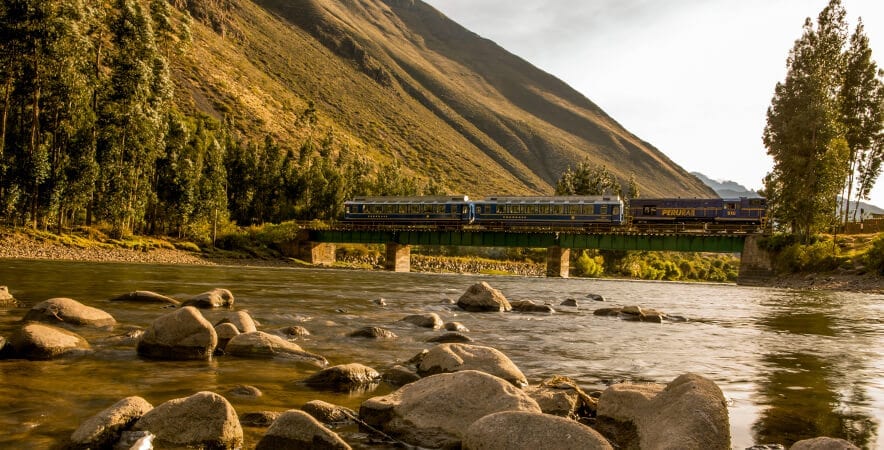
We continue your Trip to Machu Picchu by going to Ollantaytambo and boarding the train to the town of Aguas Calientes.
We are traveling to the cloud forest which happens to be at a lower elevation.
The 2-hour train ride will take you through the Sacred Valley’s Andean features to a more rainforest surrounding.
The views are absolutely spectacular so make sure to take as many photographs of the changing landscapes as possible.
Some background information on Aguas Calientes: The name translates to hot water, this is because this area has geothermal activity.
There is a hot spring located a few minutes from the center of Aguas Calientes.
This small town was created with tourism in mind. It was put together so travelers could organize their groups, rest, pick up Machu Picchu reservations, meet other groups, etc.
Upon arrival to Aguas Calientes, also known as Machu Picchu Pueblo, we’ll head over to your hotel for the night so guests can check-in and leave their backpacks.
Take the rest of the day to walk through this small town and visit some of the local shops or head over to the local hot springs.
Make sure you have a filling dinner and get plenty of sleep, the following morning we’ll travel to Machu Picchu on the shuttle so we can get on with the hike.
Guided Machu Picchu Tours

We are finally at the pinnacle of this trip to Machu Picchu. There are several schedules to pick from for entering Machu Picchu. If you are looking for the early morning experience, you’ll have a chance to catch the most spectacular sunrise ever. The sun rising over the Andes as you enter the city on your Machu Picchu tour truly is unequal.
We recommend getting the early shift of 6:00 am to achieve this view of the sun and mountains. If you would like to sleep in before heading up on your Machu Picchu hike we then a 9: 00 am time slot or even an afternoon Machu Picchu guided tour might work better for you. Just remember that if you choose an afternoon hike of the Inca complex it means you will most likely spend one additional night in Aguas Calientes or return to Cusco very late.
Once we enter Machu Picchu the guided tour will take you through various areas such as: The temple of the Condor, Temple of the three windows, Intihuatana, The Inca baths, etc. The tour will take around 2 hours, afterwards, you will have a chance to go through Machu Picchu on your own if you’d like. If you are feeling adventurous we suggest taking one of the two available hikes within Machu Picchu.
They are called Huayna Picchu and Mount Machu Picchu. Each of these presents an additional challenge for hikers, as both have magnificent bird’ s-eye views of Machu Picchu. So if you have the time and lungs we can’t recommend them enough.
To end this trip to Machu Picchu we will take a train back to the town of Ollantaytambo, the normal departure time for our groups is 3:30 pm. This however can change depending on which Mach Picchu schedule you decided to pick for the hike. The trip will take around 2 hours and once we arrive at the station we will have private transport waiting to take us back to Cusco.
Machu Picchu Landmarks to Spot on Your Trip
Inti Watana: A ritual stone associated with astronomical observations. It’s believed to have been used by the Incas as a sundial or for tracking the solstices.
Temple of the Sun: Also known as the Torreon, this semicircular temple is constructed around a large rock and offers a window perfectly aligned with the summer solstice sunrise. It’s one of the most sacred structures within Machu Picchu.
Room of the Three Windows: Located in the Sacred Plaza, this room is part of the Royal Sector and features three trapezoidal windows that are said to hold astronomical and religious significance.
Principal Temple: Known for its impressive masonry, its three walls are a testament to the Incas’ architectural skill. It is believed to have been a significant site for religious ceremonies.
Temple of the Condor: An astonishing example of Incan stonework, this temple features a rock carved to resemble a condor’s wings, with the head of the condor sculpted from a separate stone on the floor.
The Agricultural Terraces: The Incas used these terraces to farm and prevent erosion. They offer a stunning view of the engineering prowess of the Inca civilization and are a crucial part of Machu Picchu’s landscape.
The Urban Sector includes residential buildings, plazas, and temples. It’s divided into areas such as the Upper Town, which housed temples and elite residences, and the Lower Town, where common people lived.
The Royal Tomb: Located near the Temple of the Sun, this intricate structure is thought to have served as a burial place for important figures, although no bodies were found when it was discovered.
The Sacred Rock: A massive stone located near the center of Machu Picchu, believed to have held spiritual significance for the Incas. It’s thought that the rock was a focus for rituals and ceremonies.
Huayna Picchu: The towering peak that rises over Machu Picchu, offering breathtaking views of the citadel and surrounding landscape. Climbing Huayna Picchu is famous for visitors seeking a challenging hike and unparalleled vistas.
The Sun Gate (Intipunku): The ancient entrance to Machu Picchu from the Inca Trail offers spectacular views of the citadel, especially at sunrise. It’s a must-visit for those trekking to Machu Picchu via the traditional route.
The Day After Machu Picchu
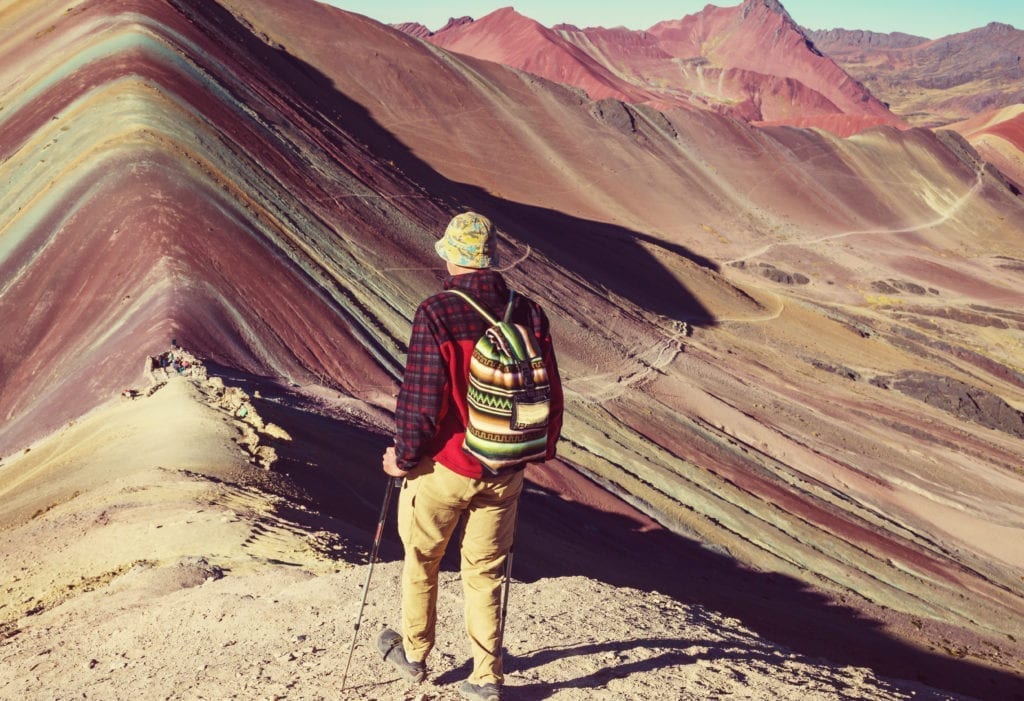
This trip does not have to be over simply because Machu Picchu is behind us. There are many activities for you to join while you are in Cusco not to mention the rest of Peru. Think of Cusco as a hub for travelers, all activities in this area will depart from the city.
If you have time left and want to extend your itinerary with us why not visit the Rainbow mountain or Humantay Lake. Both are full-day tours that include permits, gear, and even lunch.
Frequently Asked Questions About Trips to Machu Picchu
Are there hotels in Machu Picchu?
No, you won’t find hotels within Machu Picchu. There is the Machu Picchu Sanctuary Lodge located outside of Machu Picchu, and there are hotels in Aguas Calientes.
How many days do I need for a trip to Machu Picchu?
You can take a trip to Peru, fly to Cusco, and visit Machu Picchu all in one day. We don’t recommend that, though, since it will feel very rushed. We suggest a minimum of 5-7 days to properly go from Lima to Machu Picchu and see a few attractions along the way.
Do I need a visa for Machu Picchu?
Some foreign travelers will require a visa to enter Peru. Travelers from the USA, for example, can enter Peru without a visa.
Will my international flight land in Cusco, Peru?
No, your international flight will always land directly into Lima since the Cusco airport does not permit international arrivals except for a particular flight coming in from La Paz, Bolivia. No matter what your flight ticket says, there are no direct international flights into Cusco.
Can I visit Machu Picchu more than once in the same day?
Yes. If you have a permit, you will be allowed into Machu Picchu for a particular shift. If you have a permit for 6:00 am,, you can stay until around 1:00 pm. You can purchase and afternoon permit and continue exploring Machu Picchu after lunch if you would like.
Is climbing Machu Picchu difficult?
Machu Picchu is located on the side of a mountain; however, this does not mean it is a difficult hike. We would call it and easy and accessible hiking experience for 99% of people.


